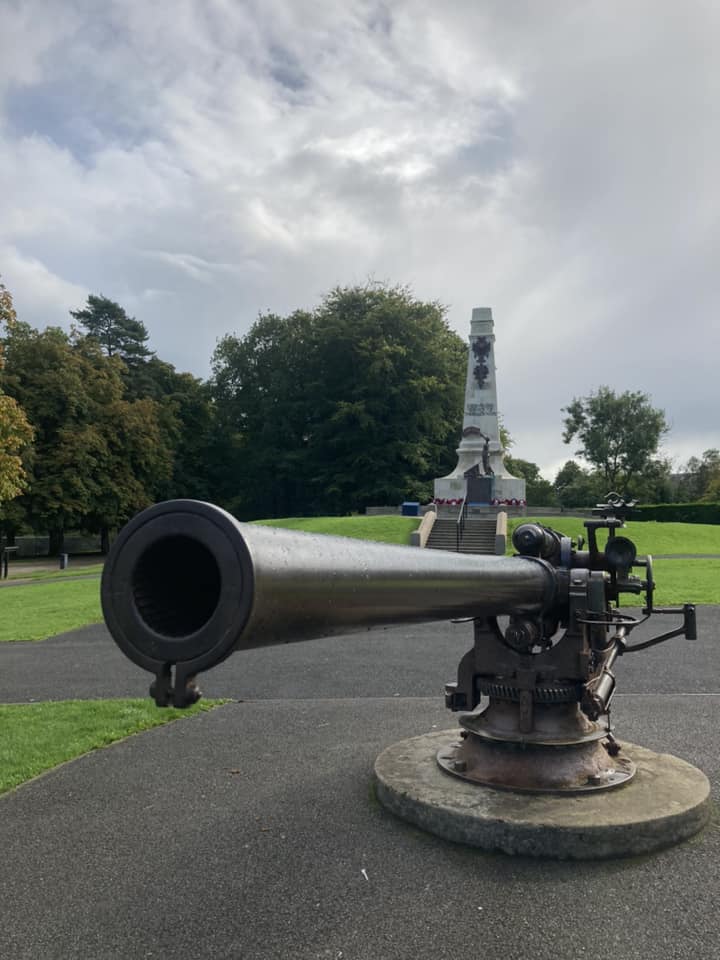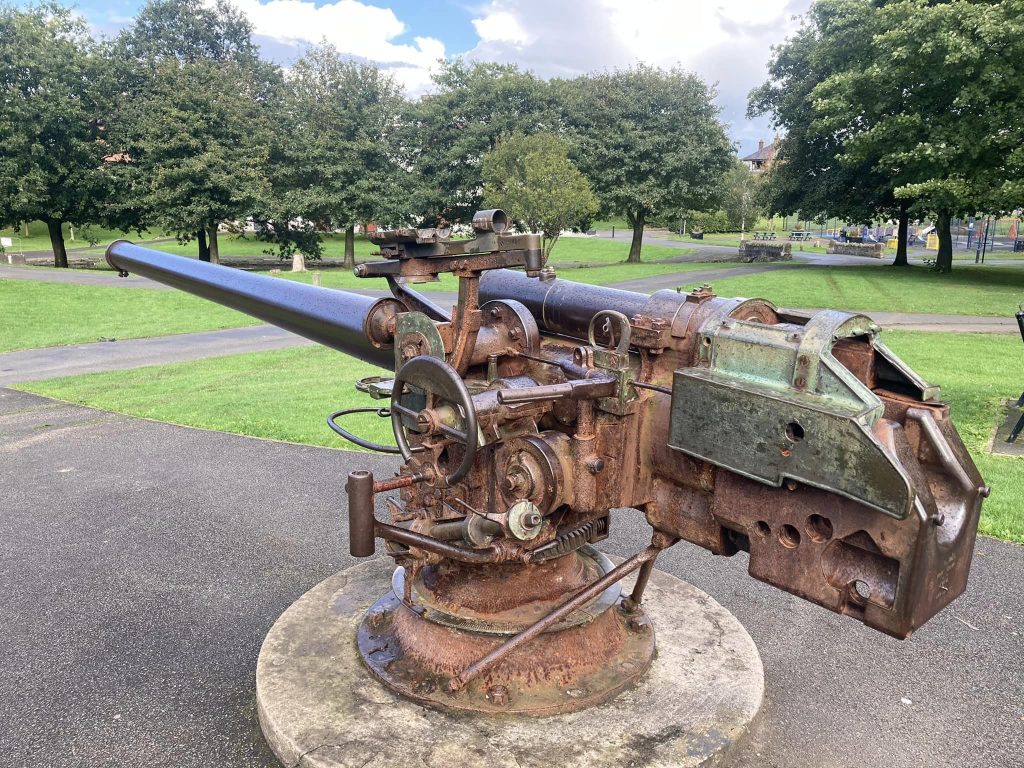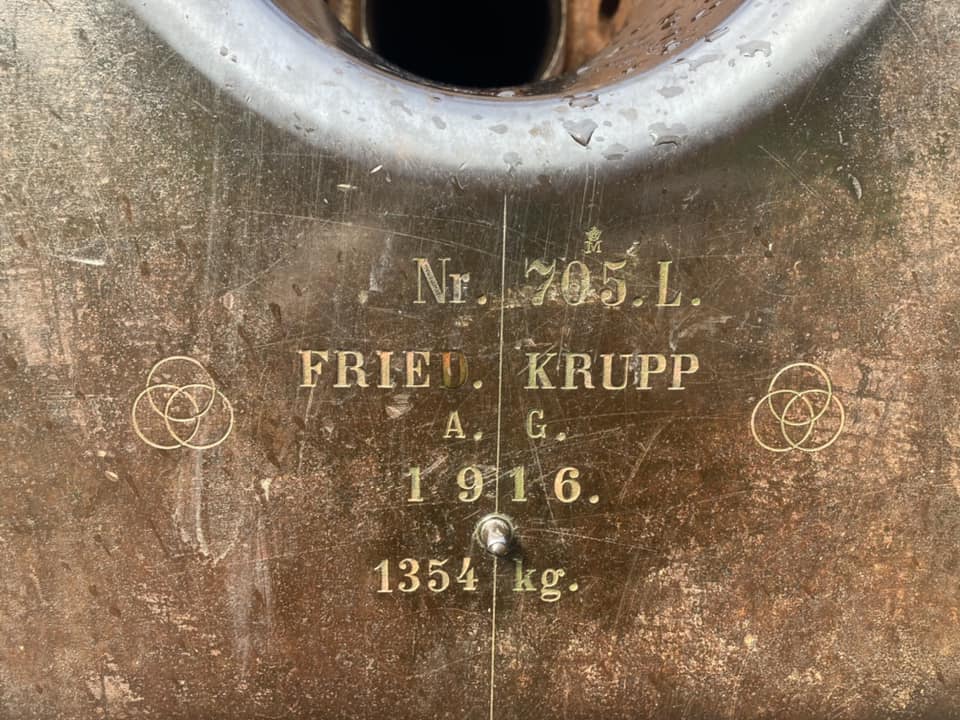
Situated within the grounds of Ward Park, Bangor Co.Down, is a deck gun from SM U-19. Gifted to the people of Bangor in honour of one of its bravest sons, The Hon. Edward Barry Stewart Bingham, hero of the Battle of Jutland and recipient of the Victoria Cross The gun remains a permanent fixture of Ward Park, beloved many as a curio of the past, and a right of passage for many a child to climb upon its barrel.
SM-U19 has the rather unfortunate honour of being the first U-Boat causality of the First World War, after having been rammed by HMS Badger. She was recovered however, and received extensive repairs to her hull. After repair, U-19 was rather active during the remainder of the war, sinking a number of ships of the coast of Ireland, including such places as Lough Swilly, Larne and Rathlin Island. With the armistice came the surrendering of U-19 to the British Navy, and afterwards, its dismantling.

However, the most interesting story in U-19’s illustrious career was the passenger she was carrying. Roger Casement, famed Irish Nationalist, negotiated with the German government to send some 25,000 captured Russian rifles and over 1,000,000 rounds of ammunition. Furthermore, the Germans gave Casement permission to raise an “Irish Brigade” from amongst the 2,000 or so Irish prisoners of war held captive by the Germans. However, enthusiasm amongst the Irish POWs to form an Irish Brigade was low, citing the treasonous ways of Casement, given their politically moderate outlook. They also feared execution should they be captured by the British.
Casement, along with two other men, Robert Monteith and Sergeant Daniel Beverly, departed Germany onboard the first of two submarines, the SM U-20. However, she suffered mechanical problems. SM U-19 was commanded by Raimund Weisbach (responsible for the sinking of RMS Lusitania) and would be the means of transport to Ireland. Casement would arrive ashore at Banna Strand, Tralee Bay, County Kerry on 21st April 1916, three days prior to the Easter Rising. Casement’s endeavour, however, would end in a most lacklustre manner. Mere hours after arriving in Ireland, Casement was arrested, found hiding out in an Iron Age hillfort by an RIC Constable. The ship transporting the arms acquired from the Germans was also captured by the British, owing to a combination of navigational errors and poor planning from the rebel leadership.
Come 1920, U-19 was broken in the dockyards in Blyth. The main deck gun, made by the Krupp foundry of the Ruhr, was donated by the British Admiralty to Commander Edward Bingham in recognition of his heroic efforts during the Battle of Jutland, which earned him the Victoria Cross.
The inscription reads:
705R THIS GUN, TAKEN FROM GERMAN SUBMARINE U.B.19., WAS ALLOTTED TO BANGOR (COUNTY DOWN) BY THE ADMIRALTY IN RECOGNITION OF THE VALOROUS CONDUCT OF COMMANDER THE HON. EDWARD BARRY STEWART BINGHAM, OF H.M.S. “NESTOR”, AT THE BATTLE OF JUTLAND ON THE 31ST MAY 1916, FOR WHICH HE RECEIVED THE VICTORIA CROSS.


Leave a Reply
You must be logged in to post a comment.